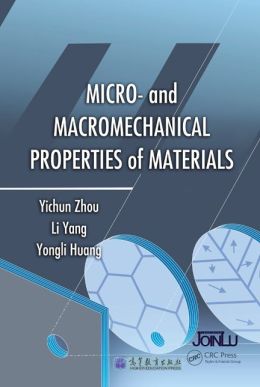 [内容简介]
[内容简介]
This is an English translation of a Chinese textbook that has been designated a national planned university textbook, the highest award given to scientific textbooks in China. The book provides a complete overview of mechanical properties and fracture mechanics in materials science, mechanics, and physics. It details the macro- and micro-mechanical properties of metal structural materials, nonmetal structural materials, and various functional materials. It also discusses the macro and micro failure mechanism under different loadings and contains research results on thin film mechanics, smart material mechanics, and more.
[目录]
Fundamentals of Elasto-Plastic Mechanics
Prerequisites
Stress
Strain
Stress–Strain Relationship
Basis of Macro- and Microfracture Mechanics
Analysis of Macrofracture Mechanics
Analysis of Microfracture Mechanics
Basic Mechanical Properties of Materials
Basic Mechanical Properties of Materials
Measurement of the Basic Mechanical Properties of Materials
Material Hardness and the Size Effect
Introduction to Material Hardness
Brinell Hardness
Rockwell Hardness
Vickers Hardness
Dynamic Indentation Hardness Testing
Scratch Testing for Materials’ Hardness
Microhardness
Nanohardness
Size Effect in Materials and Hardness
Testing of Material Fracture Toughness
Testing of Plane Strain Fracture Toughness KIC
Testing of Surface Crack’s Fracture Toughness KIE
Testing of Plane Stress Fracture Toughness KC
Testing of J Integral’s Critical Value JIC
Testing of COD’s Critical Value δC
Residual Stresses in Materials
Introduction to Residual Stresses
Measurement of Residual Stresses
Influence of Residual Stresses on the Mechanical Properties of Materials
Creep and Fatigue of Metals
Introduction to Creep of Metallic Materials
Creep Mechanisms and Creep Mechanism Diagrams of Metallic Materials
Introduction to Fatigue of Metallic Materials
Fatigue Failure and Fatigue Mechanisms of Metallic Materials
Methodology of Study of Fatigue Failure in Metallic Materials
Cyclic Stress–Strain Curves of Metallic Materials
Interaction of Creep and Fatigue
Mechanical Properties of Materials in Environmental Media
Stress Corrosion Cracking
Hydrogen Embrittlement
Corrosion Fatigue Cracking
Corrosive Wear
Other Environmentally Assisted Cracking or Embrittlement Issues
Macro- and Microcomputational Materials Mechanics
Structural Hierarchy of Materials and Computational Materials Science
Computational Material Mechanics at the Macroscale
Computational Micromechanics of Materials
Computational Nanomechanics of Materials
Multiscale Computational Analysis
Mechanical Properties of Smart Materials
Introduction to Smart Materials
Shape Memory Alloys
Magnetostrictive Materials and Ferromagnetic Shape Memory Alloys
Ferroelectric and Piezoelectric Materials
Mechanical Properties of Thin Films
An Overview
Elastic Modulus and Stress–Strain Relationship of Thin Films
Residual Stress of Thin Films
Interface Fracture Toughness of Thin Films
Fracture and Polarization of Ferroelectric Films
Flexure of Ductile Thin Films
Mechanical Properties of Polymer Materials
Polymer Viscoelasticity
Mechanical Models of Viscoelastic Behavior of Polymers
Hyperelasticity of Polymers
Yielding and Fracture of Polymers
Ceramics and the Mechanical Properties of Ceramic Coating Materials
Overview of Ceramic Materials
Mechanical Properties of Ceramic Materials
Fracture Toughness and Testing Methods of Ceramic Materials
Strength of Ceramic Materials
Thermal Shock Resistance of Ceramic Materials
Creep of Ceramic Materials
Mechanical Properties of Composite Materials
Introduction to Composite Materials
Mechanical Properties of Fiber-Reinforced Composite Materials
Mechanical Properties of Particle-Reinforced Composite Materials
Applications and Prospects of the Development of Composite Materials
Index
Chapters include exercises and references.

 新书报道
新书报道